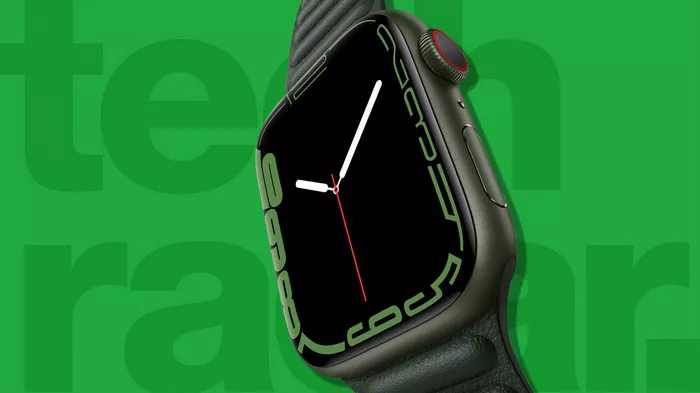The Apple Watch has become a staple in the wearable technology market, known for its seamless integration with the Apple ecosystem and its wide array of features. Over the years, Apple has released multiple series of the Apple Watch, each bringing improvements in design, performance, and functionality. Among the various sizes offered, the 42mm Apple Watch has been a popular choice. This article delves into the history, technical specifications, and features of the 42mm Apple Watch, particularly focusing on which series included this size.
Sizes and Series
Apple has continuously refined the sizes and designs of its watches to cater to a broad audience. Initially, the Apple Watch was available in 38mm and 42mm sizes. However, with the advent of newer series, Apple transitioned to slightly larger sizes, namely 40mm and 44mm, and more recently, 41mm and 45mm for the latest models.
Apple Watch Series 1, 2, and 3
The 42mm size was first introduced with the original Apple Watch (often referred to as Series 0) and continued through Series 1, Series 2, and Series 3. These models were pivotal in establishing the Apple Watch’s reputation for style and functionality.
Series 1: Released in 2016, the Series 1 was essentially an upgrade of the original Apple Watch, featuring a faster processor but maintaining the same 38mm and 42mm sizes.
Series 2: Also released in 2016, Series 2 introduced GPS, better water resistance, and a brighter display, still available in 38mm and 42mm sizes.
Series 3: Launched in 2017, Series 3 brought cellular connectivity and improved performance while retaining the 38mm and 42mm sizes.
With Series 3, Apple solidified the 42mm size as a versatile option for users seeking a larger display and a more pronounced wrist presence.
Transition to Larger Sizes: Series 4 and Beyond
Starting with the Apple Watch Series 4, Apple shifted to new sizes: 40mm and 44mm. This change allowed for a larger, edge-to-edge display without significantly increasing the overall case size. The Series 4 was a substantial redesign and set the stage for future Apple Watch models.
Series 4: Introduced in 2018, the Series 4 offered a larger display, a new electrical heart sensor, and improved health features.
Series 5 and 6: These models continued with the 40mm and 44mm sizes, adding features like an Always-On display (Series 5) and blood oxygen monitoring (Series 6).
Apple Watch SE (2020 and 2022): The SE models provided a more affordable option with the same 40mm and 44mm sizes, combining features from previous generations at a lower price point.
Technical Specifications of Apple Watch Series 9
While the 42mm size is no longer available in the latest models, it’s essential to understand the progression and enhancements in the newer series, particularly the Apple Watch Series 9.
Material and Appearance
The Apple Watch Series 9 comes in various materials and finishes, offering both style and durability:
Aluminum Case: Available in pink, midnight blue, starlight silver, silver, and (PRODUCT)RED.
Stainless Steel Case: Available in gold, silver, and graphite.
Dimensions and Weight
The Series 9 has slightly increased dimensions to accommodate a larger display and enhanced internals:
- Height: 45mm
- Width: 38mm
- Depth: 10.7mm
- Weight (Aluminum, GPS): 38.7 grams
- Weight (Aluminum, GPS + Cellular): 39.0 grams
- Weight (Stainless Steel): 51.5 grams
The Series 9 fits wrists ranging from 140mm to 245mm, ensuring comfort and a secure fit for a wide range of users.
Display
One of the standout features of the Apple Watch Series 9 is its display:
Retina Display: The Series 9’s Always-On Retina display boasts a maximum brightness of 3000 nits, making it the brightest display Apple has designed for an Apple Watch. This ensures excellent visibility even in direct sunlight.
Edge-to-Edge Design: The edge-to-edge design maximizes the screen area, allowing for more space to interact with complications, notifications, and apps.
See Also: What Bands Fit 41mm Apple Watch
Evolution of Apple Watch Features
The evolution from the original Apple Watch to the Series 9 demonstrates Apple’s commitment to innovation and user experience. Here are some key features that have been introduced and refined over the years:
Health and Fitness
Heart Rate Monitoring: Available since the original Apple Watch, heart rate monitoring has become more advanced with each series. The introduction of the electrical heart sensor in Series 4 allowed for ECG readings.
Blood Oxygen Monitoring: Introduced in Series 6, this feature measures blood oxygen levels, providing insights into overall respiratory and cardiovascular health.
Fall Detection and Emergency SOS: Starting with Series 4, fall detection uses advanced sensors to detect hard falls and can automatically contact emergency services if the user is unresponsive.
Connectivity and Performance
Cellular Connectivity: Series 3 introduced the option for cellular models, allowing users to make calls, send texts, and stream music without needing their iPhone nearby.
Processor Improvements: Each new series has brought faster processors, enhancing overall performance and enabling more complex features and applications.
Display and Design
Always-On Display: The Series 5 introduced an Always-On display, allowing users to glance at their watch for the time and other information without needing to raise their wrist.
Larger Display Sizes: The transition to 40mm and 44mm (and later to 41mm and 45mm) provided more screen real estate, improving the user interface and overall experience.
Conclusion
The 42mm Apple Watch, available in Series 1, 2, and 3, played a significant role in establishing the Apple Watch’s popularity and versatility. Although Apple has transitioned to larger sizes in recent series, the legacy of the 42mm model continues to influence the design and functionality of newer Apple Watches. The latest models, such as the Apple Watch Series 9, build on this foundation with advanced health features, improved performance, and stunning displays, ensuring that the Apple Watch remains a leader in the smartwatch market. Whether you’re a long-time Apple Watch user or considering your first purchase, understanding the evolution and features of different series can help you make an informed decision about which model best suits your needs.

